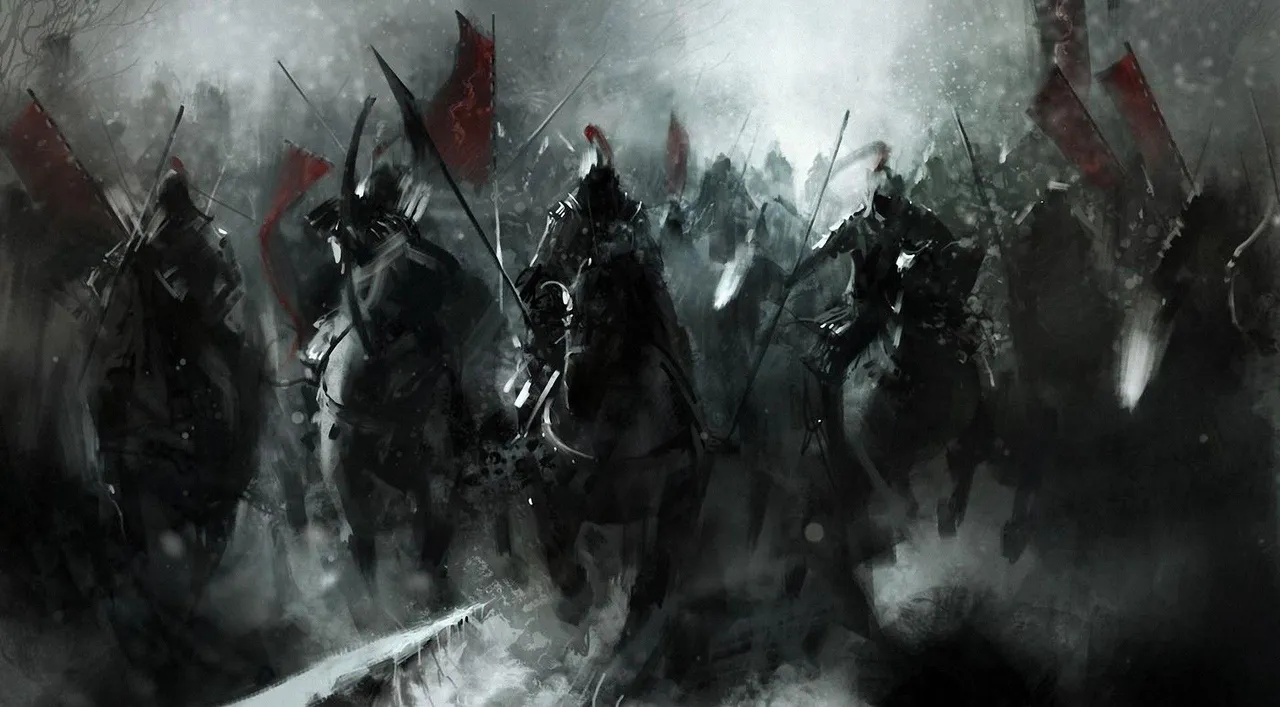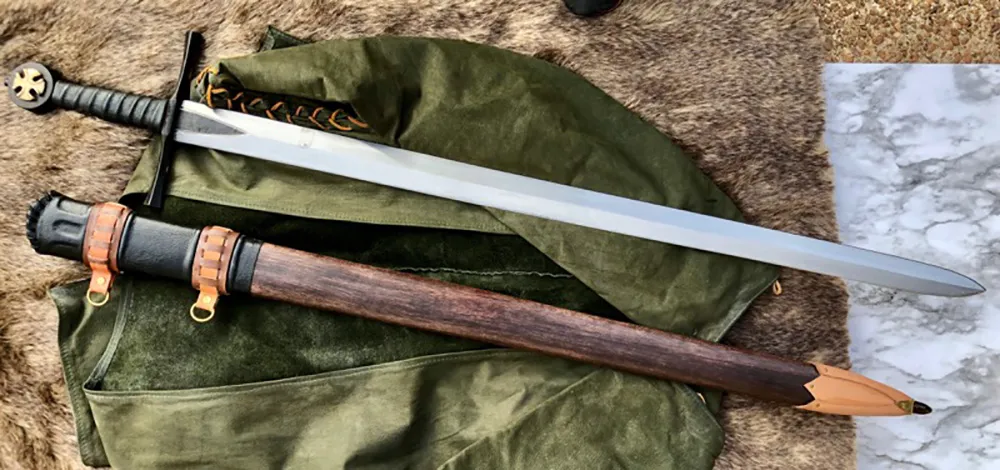The sword was a crucial weapon in wars during the Middle Ages. It was a symbol of power and nobility, and played a pivotal role in many battles and sieges.
In the early Middle Ages, swords were primarily used by mounted knights. These weapons were often long and heavy, designed to deliver powerful blows that could penetrate a knight's armor. As armor became more advanced, swords had to evolve as well. By the late Middle Ages, swords had become lighter and more agile, allowing knights to engage in more complex sword fighting techniques.

IMAGE
The sword was not only a weapon, but also a symbol of a knight's honor and chivalry. A knight's sword was often inscribed with his coat of arms, and was considered a sacred object. In some cases, a knight's sword was passed down from father to son, and was seen as a family heirloom.
Swords were also used by foot soldiers, known as infantry. These soldiers often carried short, double-edged swords that were designed for thrusting rather than cutting. These swords were effective against unarmored or lightly-armored opponents, but were less effective against heavily-armored knights.
In addition to being used in hand-to-hand combat, swords were also used in sieges. Soldiers would use long, heavy swords to break down doors and gates, or to attack the defenders on the walls. Siege swords often had a hook or a spike on the end, which could be used to grab onto the enemy's shields or armor.
There were many different types of swords used during the Middle Ages, each designed for a specific purpose. Some of the most common types of swords include the longsword, the short sword, the rapier, and the scimitar.
The longsword was a popular weapon among knights and infantry during the Middle Ages. It was a double-edged sword with a long, straight blade that could be used for cutting and thrusting. The longsword typically had a crossguard to protect the user's hand, and a pommel at the end of the handle to balance the weight of the blade.
The short sword, also known as a gladius, was a popular weapon among Roman soldiers. It was a double-edged sword with a short, curved blade that was designed for thrusting. The gladius was highly effective against unarmored or lightly-armored opponents, and was used by both infantry and cavalry.

IMAGE
The rapier was a type of sword that emerged in the late Middle Ages. It was a long, slender sword with a sharp, pointed blade that was designed for thrusting. The rapier was primarily used by civilians for self-defense, but was also sometimes used by soldiers in battle.
The scimitar was a type of curved sword that was popular among Middle Eastern and North African warriors. It had a single-edged blade that was designed for cutting, and was often used by cavalry. The scimitar was highly effective against unarmored opponents, but was less effective against heavily-armored knights.
Other types of swords include the saber, the khopesh, the cutlass, and the katana. The saber was a type of curved sword that was popular among mounted soldiers. The khopesh was an ancient Egyptian sword with a curved blade that was used for cutting and thrusting. The cutlass was a short, curved sword that was used by sailors in naval combat. And the katana was a type of long, curved sword that was used by the samurai of Japan.

IMAGE
Overall, the type of sword used in the Middle Ages depended on the user's role, the type of combat, and the weapons and armor of the opponent. The sword was an essential part of a warrior's arsenal, and was a symbol of power and nobility.
Despite the importance of the sword in medieval warfare, it was not the only weapon used. Bows and arrows, spears, maces, and other weapons were also commonly employed. However, the sword remained a symbol of a knight's skill and power, and was an essential part of a warrior's arsenal.
